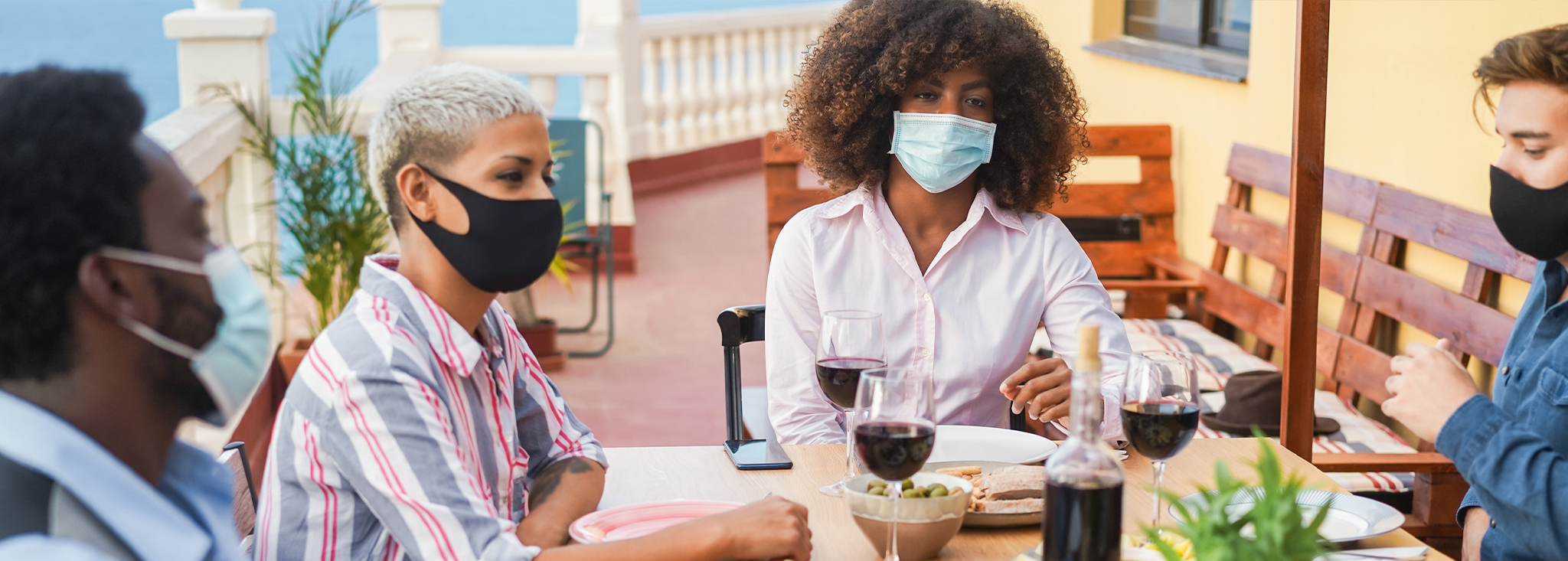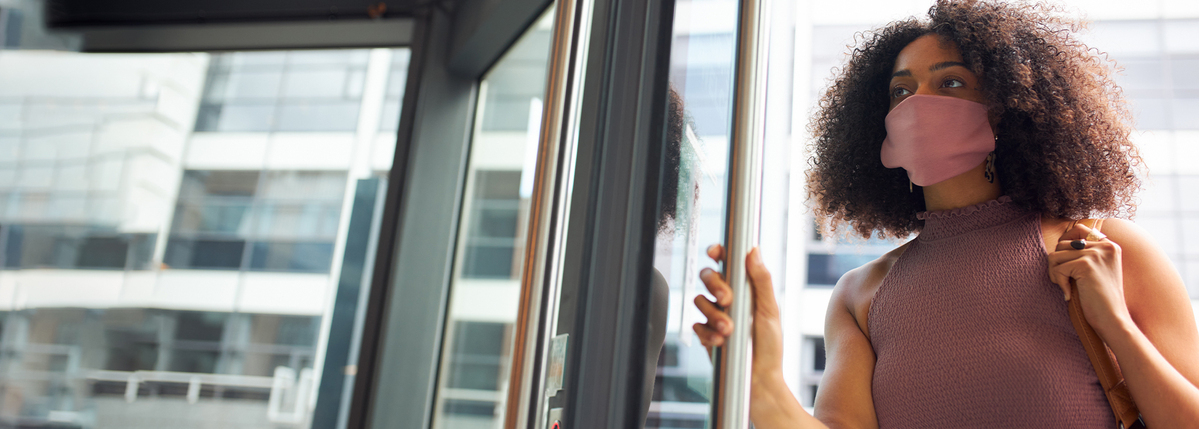Not Everyone Can Work From Home: Addressing Worker Safety During COVID-19
Written by: Dana Howe and Frida Velcani
4 minute read
July 31, 2020
Editor’s Note: This article was a collaboration between Beyond Type 1 and diaTribe, an active partner of Beyond Type 1 at the time of publication. Click here for more resources from diaTribe on COVID-19.
In May, a testing program in San Francisco’s Mission District screened almost 3,000 people living and working in a 16-square-block area for active coronavirus infection. None of these people had been tested before, and some had symptoms but most did not. Two percent overall, including those who work and live in the neighborhood, tested positive. When the data was broken down between neighborhood residents and neighborhood workers, an underlying issue became clear: just 1.4 percent of the residents tested positive, while 6 percent of the workers tested positive.
For many people, minimizing their risk of COVID-19 infection is directly at odds with their need to keep earning wages and maintaining health insurance coverage. Staying home is a privilege—and isn’t an option—for so many people, including many affected by diabetes.
The JDRF – Beyond Type 1 Alliance released coronavirus recommendations for people with type 1 and type 2 diabetes to try to keep our community as safe as possible. As restrictions shift and people return to work, our experts recommend to “make work as safe as possible.” But what does that really mean? And how possible is it, really? Breaking it down further, people with diabetes are advised to:
- Work from home as much as you can.
- Modify work procedures to keep six feet (or two meters) distance from other people.
- Adjust your schedule to avoid encountering lots of people at busy times.
- Advocate for accommodations (like flexible work options) for high-risk individuals.
While these recommendations are important reminders for those lucky enough to need only a nudge to change their individual behavior, they are limited. Workplaces carry some responsibility for establishing policies and procedures to protect their employees, but not every workplace can adapt to the circumstances of the pandemic. For people with diabetes in many essential lines of work—people who have been working throughout the pandemic such as grocery store clerks, nurses, construction workers, or delivery drivers— there is much less ability to stay safe at work.
In San Francisco’s Mission District, popular occupations among the workers who were tested included jobs in the food and beverage industry or in trade industries like construction. Of those who tested positive for the virus, 90 percent indicated that they could not work from home, and 89 percent earned less than $50,000 per year (despite San Francisco being one of the most expensive cities in the US). The lack of affordable housing is another growing problem in San Francisco that disproportionately affects low-wage workers. The “choice” to work from home or lose a salary is not a choice at all.
In a neighborhood as lively and culturally-diverse as the Mission District, social distancing has certainly been a difficult adjustment. The Mission District is home to a wide variety of restaurants, bars and shops, with working-class residents making up most of the employees at these essential businesses. These businesses have remained open during the pandemic to keep the community alive and connected, and to retain a source of income and avoid permanently closing down.
“Staying at home is a privilege. Social distancing is a privilege,” wrote Charles M. Blow in The New York Times. “The people who can’t must make terrible choices: stay home and risk starvation or go to work and risk contagion.”
Everyone with diabetes in the United States has experienced the added weight of what “employment” means. A job is not just a job—a job is earned wages that are going directly to the cost of medication, appointment copays, or the purchase of a health insurance plan. A job is the ticket to employer-sponsored health insurance to make the basic necessities possible. Without insurance, the cost of diabetes in the United States can be financially overwhelming. Patient assistance programs exist to help with the cost of supplies, but there are gaps and hurdles (such as extreme cost or the life-threatening health effects of not being able to access an essential drug like insulin). People who are undocumented are most affected by this crisis because they have limited access to employer-based health insurance and are not eligible for federal stimulus money.
As we’ve seen throughout issues of health and healthcare disparities, coronavirus rates also play out along racial lines: 95 percent of those who tested positive in the Mission District (workers and residents) were Latinx, even though this group made up only 44 percent of the total population tested. A report from the Economic Policy Institute confirms that Black and Hispanic workers are much less likely to be able to work from home. What happens to those facing multiple challenges of exposure and risk, particularly while also trying to manage a chronic health condition like diabetes?
For CBS news in mid-June, Lina Washington shared the heartbreaking story of her father Robert Washington’s death from COVID-19. Robert was a 68-year-old Arizona resident with diabetes, employed at a casino where customers were not required to wear face masks. He returned to work in mid-May and died less than a month later from COVID-19.
“My dad called me on May 16 fearing for his safety,” Lina tweeted. “He said no one was social distancing and few wore masks.” But, as the CBS article explains, Robert needed health benefits and a paycheck to cover the cost of insulin, rent and life insurance. Not going to work was not an option, but the lack of protective measures at his place of work cost him his life.
For people with diabetes, consistent and affordable access to medication, technology and care is imperative. This access falls along racial lines, with Black, Latinx and Indigenous communities experiencing crises of unemployment and COVID-19 diagnoses at disproportionately high rates due to systemic racism. Until we can keep each of us safe, none of us is safe. If you live with diabetes and are not able to work safely, know your rights. If you are able to work safely, lend your voice to Congress. Let them know that we need to protect workers with diabetes.
To learn more about how to stay safe during the COVID-19 pandemic, visit coronavirusdiabetes.org.

Author
Dana Howe and Frida Velcani
Dana Howe is the director of Brand Communications at Beyond Type 1. She is a communications professional with a public health background and has lived with diabetes for almost 20 years. <br><br> Frida Velcani is a senior associate at The diaTribe Foundation and currently lives in San Francisco’s Mission District. She is a passionate advocate for health and social justice, and looks forward to pursuing this work as a future physician.
Related Resources

Editor’s Note: We have a simple goal: tap into the power of the global diabetes...
Read more

Editor’s Note: We have a simple goal: tap into the power of the global diabetes...
Read more

Editor's Note: A version of this article first appeared at BenaroyaResearch.org from Benaroya Research Institute at...
Read more

